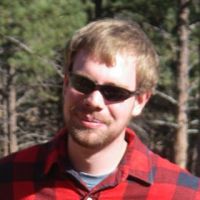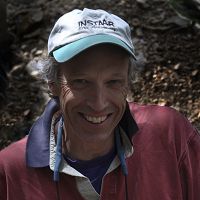Befus et al, 2011
Seismic constraints on critical zone architecture, Boulder Creek Watershed, Colorado
Befus, K.M., Sheehan, A.F., Leopold, M., Anderson, S.P., and Anderson, R.S (2011)
Vadose Zone Journal 10: 915-927
-
Boulder, GRAD STUDENT
-
Boulder, INVESTIGATOR
-
Boulder, INVESTIGATOR
-
Boulder, INVESTIGATOR
-
Boulder, INVESTIGATOR
Abstract
We use a minimally invasive, shallow geophysical technique to image the structure of the Critical zone from surface to bedrock (0–20 m) in two small drainages within the Boulder Creek Critical Zone Observatory (BcCZO). Shallow seismic refraction (SSR) surveys provide a three-dimensional network of two-dimensional cross-sections (termed quasi-3D) of Critical zone compressional wave velocity (V p ) structure within each catchment, yielding a spatial description of the current Critical zone structure. The two catchments, Betasso and Gordon Gulch, represent contrasting geomorphic histories within the Front Range: Betasso shows hillslope response to a late Cenozoic increase in fluvial incision of Boulder Creek, while Gordon Gulch represents more steady erosion. The mean depth to fresh bedrock in both catchments is roughly 15 m. Unique subsurface features in each catchment reflect active geomorphic processes not suggested by similarities in mean interface depths. Betasso contains thick disaggregated materials high in the drainage that are nearly absent near the outlet. This presumably reflects the impact of base-level lowering, which we suggest has progressed roughly 500 to 1000 m up into the catchment. Aspect-driven differences in the subsurface within each catchment add complexity and overprint the broader geomorphic signals. Shallow seismic refraction subsurface structure models will guide future investigations of Critical zone processes from landscape to hydrologic modeling and are invaluable as connections between time-consuming point measurements of physical, chemical, and biological processes.
Citation
Befus, K.M., Sheehan, A.F., Leopold, M., Anderson, S.P., and Anderson, R.S (2011): Seismic constraints on critical zone architecture, Boulder Creek Watershed, Colorado. Vadose Zone Journal 10: 915-927. DOI: 10.2136/vzj2010.0108er
 This Paper/Book acknowledges NSF CZO grant support.
This Paper/Book acknowledges NSF CZO grant support.
Explore Further





